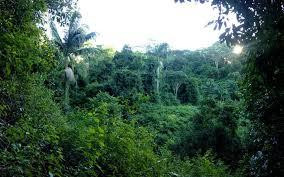More and more homes are focusing on building new homes using more or less environmentally friendly techniques. Indeed, a boom towards returning to the land and simple techniques has been felt for a few years. One of the most popular methods is undoubtedly a Permaculture Course. This new philosophy is proving to be an effective tool for designing a system whaere all the elements of the home interact sustainably. Discover the principle and the advantages of this recent method for your home.
What exactly is permaculture?
Permaculture itself is a method of cultivation or an agricultural system. It involves using ecological principles and traditional knowledge to reproduce a sustainable, stable, and natural ecosystem.
This principle reproduces precisely what nature does so that living beings, plants, and animals live in harmony and balance. Permaculture made its first appearance in the 1970s. It was the time of the return to the Syntropic Farming Queensland and ecological awareness.
The principle of permaculture
Plants grow in the soil where they are adapted to the climate and die there. Large plants protect the most fragile from the scorching sun, and they reseed themselves of their own accord. The gardener, therefore, intervenes here as a pure conductor, ensuring the general harmony.
Therefore, a Permaculture Australia garden is a more or less autonomous, sustainable system where the gardener lets nature act on its own. Instead of constantly correcting it, it takes advantage of natural interactions. For example, it performs natural recycling of matter with biodiversity rather than chemical fertilizers and pesticides.
Permaculture applied in gardening
If you want to learn about this practice, the Syntropic Gardening Queensland remains the most accessible. It consists of producing its fruits and vegetables, which allow autonomy while improving the soil. Bunch cultivation, for example, is a principle that makes gardening easier with height.
It extends the planting area by diversifying the types of areas. It is, therefore, necessary, even essential, to organize the companionship of plants and the kitchen garden.
You have understood it. All the resources, namely horizontal and vertical space, the sun, the frequency and quantity of rain, the force, and the direction of the wind, will be used to the maximum. The aim is to meet the inhabitants' needs, especially in terms of food, energy, water, and heating.
How to integrate this philosophy into your construction project?
When thinking of Pdc Australia, most beginners think of integrating the garden, trees, and other plants. However, the design of the land will significantly depend on the results. Indeed, to minimize unnecessary energy loss, the location of each element is thought out in advance.
In this case, the land must be divided into several zones, according to Permaculture Community Australia.
This zone is named Zone 0 because it is from there that we will make the comings and goings towards the other zones.
In zone 1, a vegetable garden, compost, aromatics, the henhouse, and the greenhouse require daily visits.
In zone 2, we will find the orchard and the beehives, which require frequent visits.
Most of the time, the hedge is named zone 3 because it doesn't need humans. A part that will be left to nature will also be integrated into this area.
